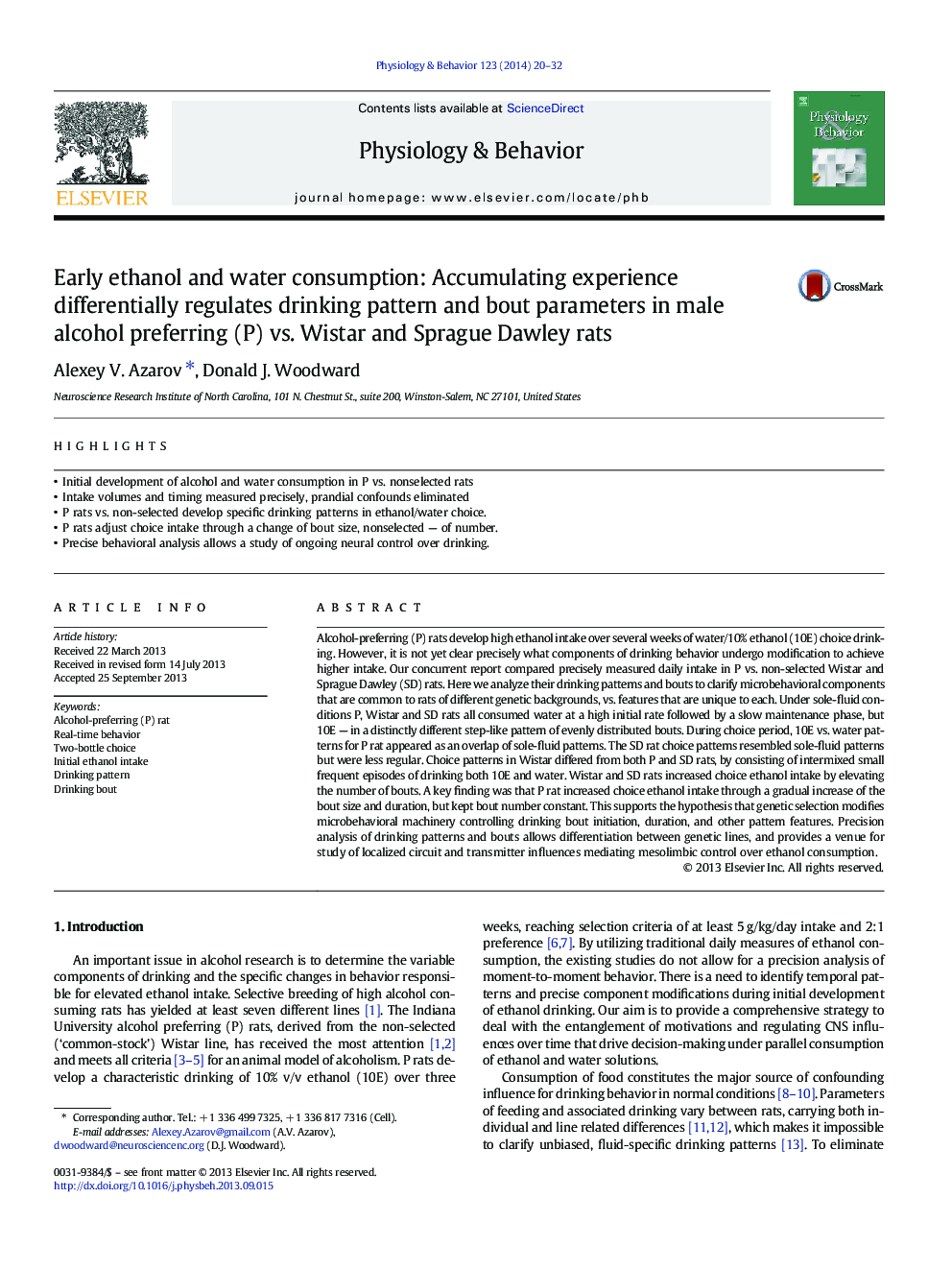| Article ID | Journal | Published Year | Pages | File Type |
|---|---|---|---|---|
| 5924542 | Physiology & Behavior | 2014 | 13 Pages |
Abstract
Alcohol-preferring (P) rats develop high ethanol intake over several weeks of water/10% ethanol (10E) choice drinking. However, it is not yet clear precisely what components of drinking behavior undergo modification to achieve higher intake. Our concurrent report compared precisely measured daily intake in P vs. non-selected Wistar and Sprague Dawley (SD) rats. Here we analyze their drinking patterns and bouts to clarify microbehavioral components that are common to rats of different genetic backgrounds, vs. features that are unique to each. Under sole-fluid conditions P, Wistar and SD rats all consumed water at a high initial rate followed by a slow maintenance phase, but 10E - in a distinctly different step-like pattern of evenly distributed bouts. During choice period, 10E vs. water patterns for P rat appeared as an overlap of sole-fluid patterns. The SD rat choice patterns resembled sole-fluid patterns but were less regular. Choice patterns in Wistar differed from both P and SD rats, by consisting of intermixed small frequent episodes of drinking both 10E and water. Wistar and SD rats increased choice ethanol intake by elevating the number of bouts. A key finding was that P rat increased choice ethanol intake through a gradual increase of the bout size and duration, but kept bout number constant. This supports the hypothesis that genetic selection modifies microbehavioral machinery controlling drinking bout initiation, duration, and other pattern features. Precision analysis of drinking patterns and bouts allows differentiation between genetic lines, and provides a venue for study of localized circuit and transmitter influences mediating mesolimbic control over ethanol consumption.
Related Topics
Life Sciences
Biochemistry, Genetics and Molecular Biology
Physiology
Authors
Alexey V. Azarov, Donald J. Woodward,
